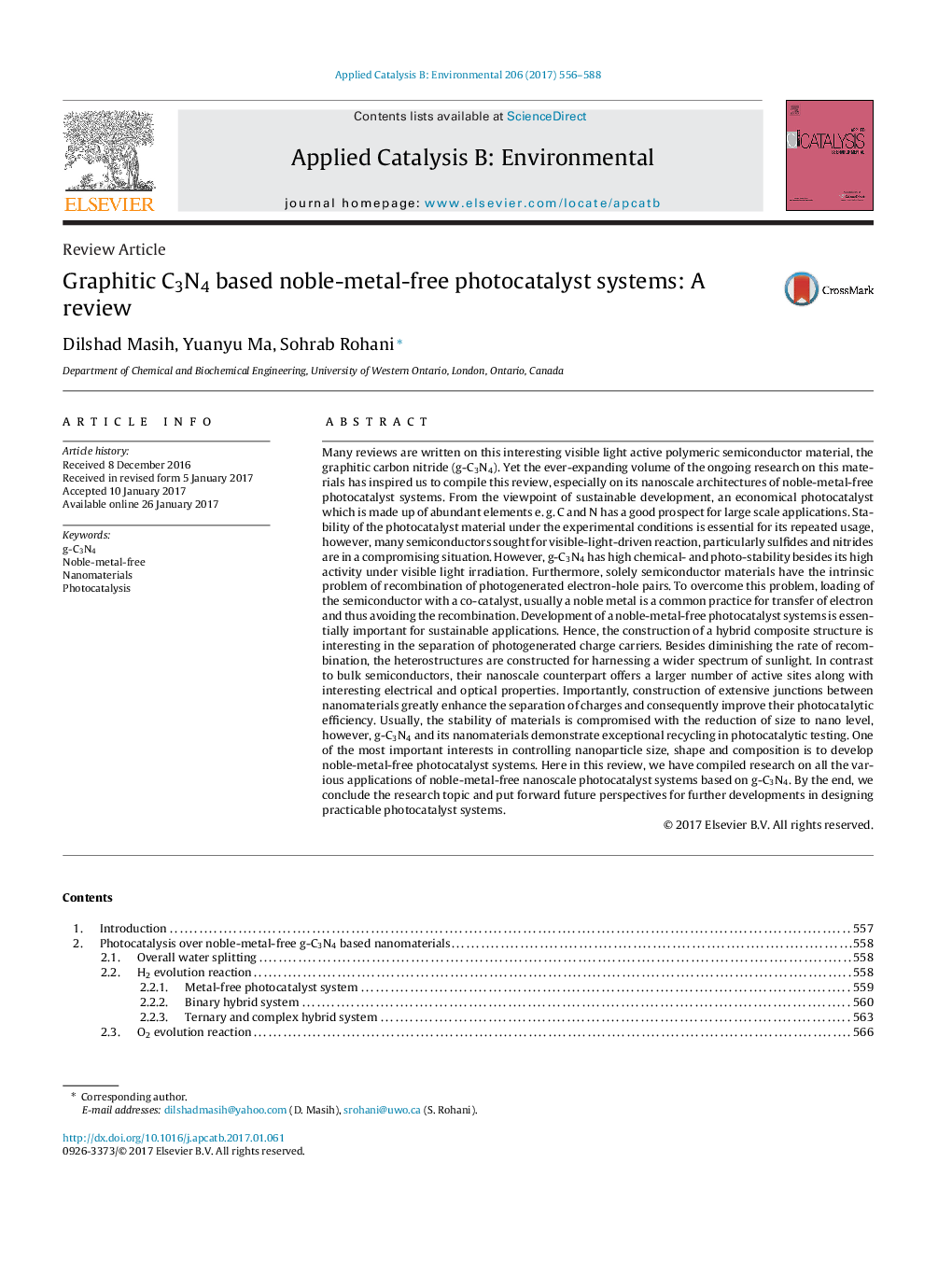| کد مقاله | کد نشریه | سال انتشار | مقاله انگلیسی | نسخه تمام متن |
|---|---|---|---|---|
| 6454754 | 1418814 | 2017 | 33 صفحه PDF | دانلود رایگان |

- A summary of nanoscale g-C3N4 based noble-metal-free photocatalyst systems.
- Discussion on all the various photocatalytic applications in environment and energy sectors.
- An outlook of future research prospects for the development of sustainable materials.
Many reviews are written on this interesting visible light active polymeric semiconductor material, the graphitic carbon nitride (g-C3N4). Yet the ever-expanding volume of the ongoing research on this materials has inspired us to compile this review, especially on its nanoscale architectures of noble-metal-free photocatalyst systems. From the viewpoint of sustainable development, an economical photocatalyst which is made up of abundant elements e. g. C and N has a good prospect for large scale applications. Stability of the photocatalyst material under the experimental conditions is essential for its repeated usage, however, many semiconductors sought for visible-light-driven reaction, particularly sulfides and nitrides are in a compromising situation. However, g-C3N4 has high chemical- and photo-stability besides its high activity under visible light irradiation. Furthermore, solely semiconductor materials have the intrinsic problem of recombination of photogenerated electron-hole pairs. To overcome this problem, loading of the semiconductor with a co-catalyst, usually a noble metal is a common practice for transfer of electron and thus avoiding the recombination. Development of a noble-metal-free photocatalyst systems is essentially important for sustainable applications. Hence, the construction of a hybrid composite structure is interesting in the separation of photogenerated charge carriers. Besides diminishing the rate of recombination, the heterostructures are constructed for harnessing a wider spectrum of sunlight. In contrast to bulk semiconductors, their nanoscale counterpart offers a larger number of active sites along with interesting electrical and optical properties. Importantly, construction of extensive junctions between nanomaterials greatly enhance the separation of charges and consequently improve their photocatalytic efficiency. Usually, the stability of materials is compromised with the reduction of size to nano level, however, g-C3N4 and its nanomaterials demonstrate exceptional recycling in photocatalytic testing. One of the most important interests in controlling nanoparticle size, shape and composition is to develop noble-metal-free photocatalyst systems. Here in this review, we have compiled research on all the various applications of noble-metal-free nanoscale photocatalyst systems based on g-C3N4. By the end, we conclude the research topic and put forward future perspectives for further developments in designing practicable photocatalyst systems.
151
Journal: Applied Catalysis B: Environmental - Volume 206, 5 June 2017, Pages 556-588